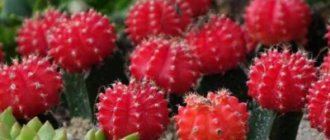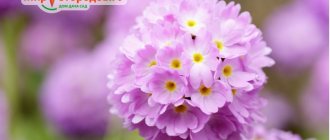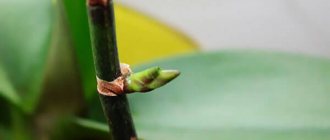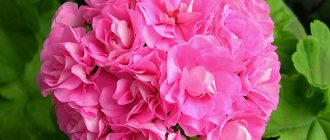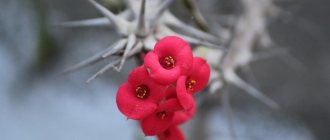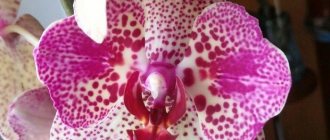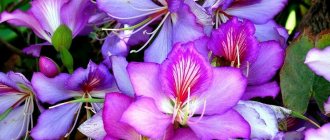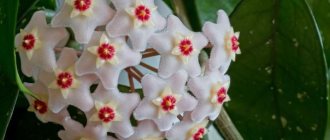The Balsam flower (popular name - Vanka wet) is quite widely known throughout the post-Soviet space due to its unpretentiousness. Photos of Vanka wet (balsam) in the interior of that time are not at all uncommon.
The plant has many names. Scientific - Balsam, and common people - Impatiens, Vanka wet, Ogonyok. The flower has beautiful dense greenery and quite pretty flowers, the color range of which ranges from light pink to dark red. The flower is so colorful that its very appearance lifts your spirits and gives you joy. In this article we will talk about caring for the Vanka wet flower (indoor balsam).
Features and names of the plant
The homeland of balsam (Impatiens) is Africa. Or more precisely - o. Zanzibar. The flower came to Europe only in the 16th century. Culture was brought to Russia even later (in the 19th century). But here she has taken root perfectly. Domestic flower growers quickly learned everything about balsam and began to successfully grow it in different regions of the country. The plant belongs to the Balsamaceae family.
Description of the plant:
- balsam has a bush-like shape;
- consists of long (up to 75 cm) juicy, fragile, transparent stems;
- the leaves are elongated, heart-shaped, slightly wrinkled, and are pure green or brownish in color;
- five-petaled flowers are single, axillary, have characteristic spurs up to 5 cm long;
- The color of the flowers is varied: all sorts of shades of pink, red, purple, coral; there are white and variegated ones.
Bud with a spur
The culture is amenable to breeding experimentation. Currently, many varieties have been bred: tall and low bushes, with simple and double flowers, with large and miniature buds.
The special properties of the culture and long history have given it several interesting names:
- "Touchable." It appeared because during the period of seed ripening the plant becomes sensitive to any touch. Even the touch of the wind can cause fruit pods to scatter.
- Flower "Spark". As evening approaches, dozens of flowers of different shades open on the bushes of the plant. It looks very attractive and gives the impression of burning lights.
- "Wet Vanka." During the growing season, small drops of moisture appear on the leaves of the plant. There is a sign that in this way Vanka Mokry signals the approach of rain. This variant of the name is also associated with the constant need of the flower for watering and moisture.
Impatiens can be annual or perennial. This is determined by different ways of planting it depending on the region. In general, the flower, which appeared in the warm tropics, is a perennial. But in colder regions it is planted outside as an annual plant. Then it blooms all summer until late autumn.
What is Balsam
Since 1596, Europe began to be filled with a flower with a cute appearance, becoming popular throughout the world. Impatiens are valued for their ability to bloom almost all the time, without requiring much care. In addition, it can be easily propagated.
Depending on the variety, the height of the plant can be from 0.15 to 0.5 meters. On branched strong stems there is fleshy foliage with a wavy edge. It is colored green with a red tint. There are also varieties with bronze and green leaves. The peculiarity of this plant is that drops can collect at the ends when the humidity level rises. Most likely, it is because of this phenomenon that Balsam is popularly called Vanka-wet.
The flowers are located inside the leaf axils and the variety of their colors is very great. For example, there are red, pink, orange, purple, white. Their surface can still be decorated with stripes and spots. In addition, there are terry leaves and multi-colored ones. Most varieties have miniature flowers. But it is precisely because of their bright color that they look attractive, and the plant is sometimes called “Balsam Light”.
After the flowering period, green fruits begin to develop. By the end of its ripening, it turns into a box with seeds. With a light touch it can explode, scattering seeds. It is thanks to this feature that the plant is also called “Impatiens impatiens”.
Impatiens can be either perennial or annual. The first varieties are used to decorate rooms, and the second - for balconies and gardens. To create a flower bed, it is recommended to use frost-resistant varieties whose flowering period lasts from spring until the first frost.
Impatiens is a suitable flower for rooms where children are. For example, it can be placed in schools, kindergartens, etc.
Types of indoor balsam and popular varieties
There are about 400 species of Impatiens plant. The most popular types of balsam (impatiens) are useful for every gardener to study.
There are 4 main ones and several variety series that are popular in indoor culture. The same care is recommended. Basically, variations of the indoor perennial plant balsam differ from each other in appearance.
Waller's touch-me-not
The species stands out for its love of diffused light and sensitivity to touch. The bush can drop all its flowers due to a slight outside touch at a certain period. The plant is compact - usually no higher than 25 cm.
It has sharp oval leaves that are deep green in color. And the appearance of flowers depends on the subspecies. The flowers are quite large, with different variations of double size - from simple to lush roses.
Waller's impatiens, due to its beauty and ease of care, quickly became popular among gardeners. Therefore, breeders began to develop its varieties. This is how new additional varieties of balsam appeared.
Stardust
Stardust is a compact flower with large bright buds. This balsam with pink flowers is especially popular. They are large in size, bright pink with a slight white dusting on the petals.
Snow-white underside of the buds. The variety is distinguished by its resistance to pests. For example, he is not afraid of ticks.
Kandy
Balsams of the Kandy series were bred and went on sale not so long ago. The bushes of the plant consist of smooth and succulent stems, petioles with elongated oval leaves (their tip is pointed).
The culture blooms abundantly, the buds are bright, the flowers bloom simple and are located on high stems. The flowers are soft to the touch, with a delicate velvety surface. The variety is not demanding in care.
Tropical
Impatiens flowers of the Tropical variety are semi-double, beautiful with unusual colors. They are found in colors ranging from salmon (delicate) to bright coral.
This is a very popular variety in modern floriculture. It is more demanding in care than previous options, but also does not require special conditions. You can simply grow the crop on a windowsill in a small pot.
Fiesta
Terry balsam Fiesta is considered a universal species for indoor growing. Famous for its large, bright flowers in many shades.
The petals of the plant are terry and pleasant to the touch. The variety is easy to propagate. To do this, cuttings are cut throughout the season, which take root well at home.
New Guinea
Hawker's balsam, which grows wild in New Guinea, has become the source plant for the development of several varieties, which are called New Guinea hybrids. The culture has large flowers that bloom almost all year round. The elongated oval leaves have a rich color, often dark.
The plant is fast growing and larger than Waller's impatiens. It first appeared in Europe at the end of the 16th century and has not lost its popularity among gardeners since then.
Niamean
Niamey balsam has unusual flowers, shaped like beans. They can be yellow, red or two-color.
The variety is undemanding to lighting - perfect for growing in any window. During the period when the plant is not blooming, you can even place it in a shaded corner. And for high-quality flowering, it will already need a sufficient amount of light at least 4-5 hours a day.
Orchidaceous
Orchid balsam is an unpretentious indoor variety. It has a brittle deep pink stem with large green velvety leaves.
The main thing in caring for this variety is to water the flowers regularly, since they cannot tolerate either drying out or waterlogging of the soil.
Indoor flowering plants with a wide variety of varieties: indoor begonia, pelargonium, indoor gerbera, fuchsia.
How to care for balsam at home
Any varieties of indoor balsam flowers are not picky to care for. An excellent option for beginning creators of home plant collections. The main thing is to understand the basic important conditions (features of lighting, watering, fertilizing, transplanting). Proper planting and care will allow the gardener to become the owner of a lush, beautiful, bright flower.
Illumination
Responsible care for balsam necessarily includes choosing a place for the flower in the apartment and lighting. It is best to place the pot with the plant on the window sill on the south side. At first, on sunny days, young bushes are covered with light curtains to prevent burns of the foliage. In very hot summers, it is advisable to move the flower to a western or eastern window sill. And during the rest of the year there is no point in protecting the plant from sunlight. The crop will not bloom in a very dark place. And light partial shade will be beneficial - the flowers will be brighter.
If the plant begins to stretch upward and the lower leaves fall off, this is a clear clue that the pot is located in the wrong place. In this case, you can wait for flowers only at the very top of the bush. It is necessary to choose a more comfortable place for the balsam and observe its behavior.
In the summer, it is recommended to place the flower on the balcony or outside so that it receives direct sunlight and fresh air. It is only important to ensure that the plant is not damaged by rain and wind.
Temperature
Indoor balsam loves warmth. In summer it is comfortable to grow at temperatures from +20 to +28 degrees. In winter, this figure can be reduced. It is optimal to maintain the room temperature at least +16 degrees. In the cold, the lights do not bloom and begin to slowly die.
Watering
When caring for balsam at home, it is easier to regulate watering than when growing it in open ground. The flower loves water, but it cannot be flooded. The soil in the pot should be constantly moist. For watering, it is worth preparing a bottle of water a day in advance so that it has time to settle. In summer, balsam needs a portion of water daily or every other day. In winter, the amount of watering is reduced by about 3 times.
It is necessary to regularly assess the condition of the soil in the pot. As soon as it dries 1 cm deep, the plant urgently needs watering. If a white coating is noticed on the surface of the earth, it should be softened and the alkalization process should be stopped. To do this, the top layer of soil is removed and a new one is filled in.
Top dressing
Fertilizers should be applied to pots with balsam from mid-spring to late autumn, repeating the procedure 2 times a month. In this case, special mixtures for fertilizing are selected, formulated for indoor flowers. They must contain potassium and phosphorus.
Terry balsams require nitrogen mixtures less often. They are introduced into the soil in the spring, as this speeds up the process of foliage growth. Excessive amounts of nitrogen can harm the plant. To determine the portion of such fertilizer for balsam, you should divide by 2 the amount recommended in the instructions for it.
Transfer
Balsam is one of those plants that should not be grown for years, replanting it annually in a new pot. Young bushes that are looked after for one or two seasons look more attractive.
But replanting will still be necessary when caring for indoor balsam at home. The bush grows and from month to month the nutritional value of the soil in the pot decreases. As a result, the leaves begin to fall off, the stems become elongated, and the flower looks and develops worse.
Transplanting the crop into a new pot will help avoid this. It should be more spacious so that all the roots of the plant and a small portion of fresh soil can completely fit in it. Excess shoots can be cut off during transplantation.
When moving the balsam into a new pot, it is carefully transferred along with the earthen lump. This should be done as carefully as possible so as not to damage the roots.
Afterwards, the plant is watered and a fresh portion of soil is poured into the container. The balsam will bloom again when it adapts to new conditions.
Balsam propagation
The culture is propagated in two ways: cuttings and seeds. In the first case, the plant takes root very quickly. And in the second, you need to create a more complex soil mixture for the flower.
Propagation by cuttings
Indoor balsam is most often propagated by cuttings. In the process, it is enough to cut off part of the stem (7-8 cm), remove the lower leaves and send it into the water. Place the cutting in a glass in a warm and bright place. In about 8-9 days it will take root.
The soil mixture must be prepared consisting of five components in equal proportions: turf soil, leaf soil, humus, peat, sand. The soil should be loose and nutritious.
It is better to plant cuttings in pots several at a time - this will allow you to get a lush bush. A full flowering plant should be expected in a few months. All qualities of the mother variety are preserved.
Growing from seeds
When growing balsam from seeds, you will need to mix 1 part perlite and 2 parts peat. Flower seeds are scattered over the mixture, covered with a thin layer of earth and sprinkled with water. They are left under glass for the duration of germination at +22-25 degrees. It is important not to overwater the seeds. The best time to sow seeds is January.
Planting and transplanting
After purchasing, the flower is planted in a tight pot so that it blooms. You can use ready-made universal soil for decorative flowering plants. The flower loves nutritious loose soil mixtures.
You can prepare the soil yourself by mixing humus and peat in equal proportions, adding a little sand. It is unpretentious to the soil, the main thing is that it is fertile. Every year or two the soil needs to be updated to maintain its decorative appeal.
- Impatiens are replanted in the spring.
- Fertilizing is carried out once every two weeks, alternating organic and mineral supplements.
- There is no need to fertilize the soil in winter.
- In open ground they are planted in holes, mixing in fertile soil and compost. Annual species grown from cuttings are not replanted; they are renewed by cuttings. This is a very convenient way to rejuvenate a plant.
You can learn more about planting and replanting balsam here.
Diseases and pests
Yellowing, falling or wilting of balsam leaves indicates a possible disease. A long absence of flowering may also indicate this.
The flower can be bothered by whiteflies and spider mites. Pests attack the flower in insufficiently ventilated or too hot rooms. Special traps - sticky tapes hung over the pots - will help to partially cope with them. You also need to regularly clean whitefly eggs and larvae from the leaves and spray the plant with insecticidal solutions.
Moist and fresh air will drive away ticks from the balsam. The simplest and most effective measure is regular spraying of indoor flowers. The mite is afraid of humidity, while the balsam is moisture-loving.
If moss or mold is noticed on the ground in the pot, the top layer is removed and thrown away. This part is replaced with a new nutrient mixture of soil and sand.
Fading leaves and signs of rotting of the root system indicate that the soil in the pot urgently needs to be changed. The indoor flower is removed from the container and the roots are washed. The new soil should be water- and breathable, loose. If the root system is already severely damaged, then you will have to take cuttings from the plant.
Characteristics of the swimsuit
Here are the main indicators of the plant:
- Family: Ranunculaceae;
- Type: perennial;
- Flowering time: late spring - early summer;
- Height: up to 1 meter;
- Advantages: beautiful, bright flowers and unpretentiousness;
- Interesting fact: the swimsuit is depicted on the coat of arms of the city of Shelekhov, Irkutsk region, and the Asian swimsuit was also depicted on Soviet stamps.
Bathhouse is a herbaceous plant with a strong root system. She prefers damp places : meadows, swamps, banks of reservoirs. Perhaps this is one of the reasons for the name of the plant.
By the way, the lights always hold the stem straight; this is necessary to maintain favorable conditions inside the flower, and insects that settle in the bud often take advantage of this.
Possible growing problems
When caring for balsam at home, various problems may arise. So, in winter, a flower often freezes if it is located close to the glass of a window. In this case, it should be moved further away and placed where the plant receives heat from the radiator.
It happens that balsam leaves begin to lose moisture in the summer and dry out. In this case, you will need to measure the humidity in the room. It should remain within 40-60%. Even without special humidifiers, it can be raised to such levels by regular spraying from a spray bottle.
Balsam has many varieties, each of which has its own special advantages. Among them, any gardener will find the ideal option for himself. With minimal proper care, the plant will delight its owner with bright, beautiful flowers for many months. Impatiens is included in the Top flowering indoor plants.
Advantages of a swimsuit
It is not surprising that many different cultivated varieties of this plant have been bred and that it is popular, because the lights have a number of advantages:
- beautiful, lush and bright flowering;
- unpretentiousness;
- disease resistance;
- medicinal properties.
The unpretentiousness and disease resistance of the flames are important advantages, especially in the harsh climate of Siberia, because it is not for nothing that the flames are called the Siberian rose: they combine beauty and durability. At the same time, they delight with their bright and abundant flowering for a long time.

